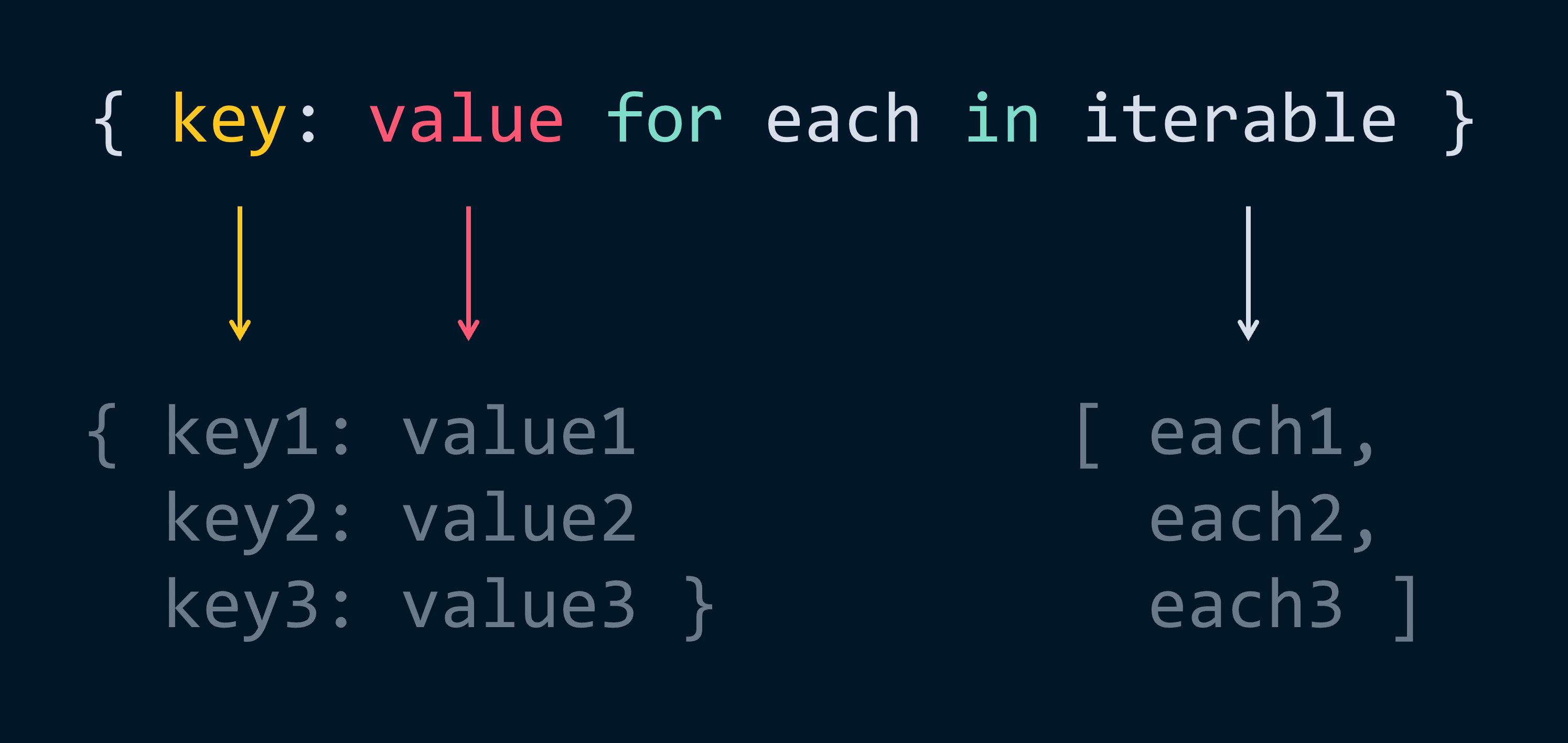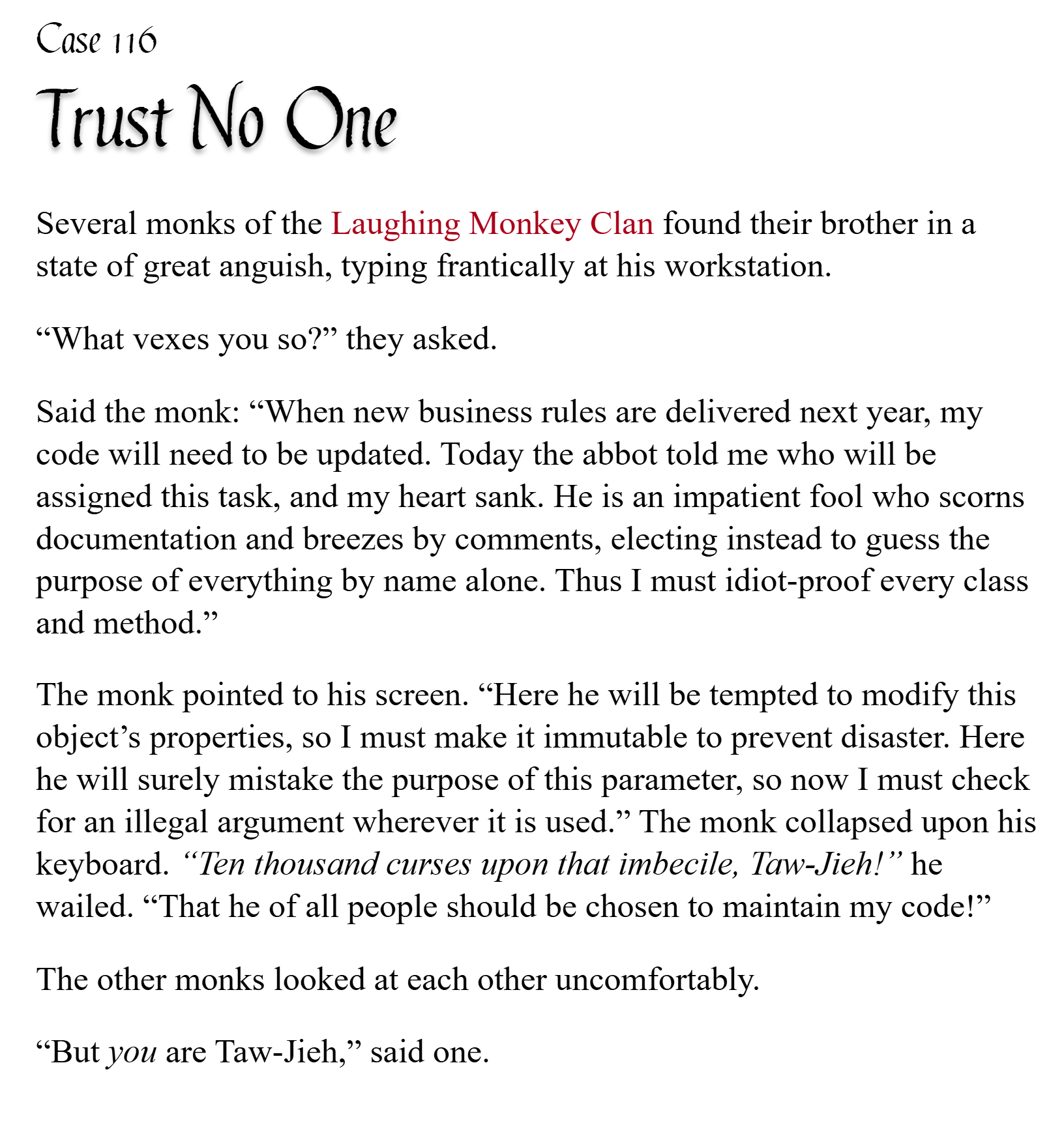Sometimes it pays to stay in bed on Monday, rather than spending the rest of the week debugging Monday’s code.
In the very first issue of pycobytes I introduced you to one of Python’s flagship tricks, the list comprehension.
>>> [each.upper() for each in "pycobytes"]
["P", "Y", "C", "O", "B", "Y", "T", "E", "S"]I imagine it won’t come as a surprise that this isn’t restricted to just list – dictionary and set comprehensions exist too!
The notation for set is identical to list, except you swap out the square brackets for curly braces:
>>> {n % 5 for n in range(2, 100)}
{1, 2, 3, 4, 0}
# bear in mind sets are unordered, so this is an arbitrary orderDictionaries, on the other hand, need both a key and value. In another world we’d probably supply these as a tuple (key, value), but luckily our friend Python has once again pulled out some syntactic sugar:
>>> keys = [1, 3, 7, 17]
>>> {each: str(each) for each in keys}
{1: "1", 3: "3", 7: "7", 17: "17"}
# remember numbers can be keys too, even if it’s a bit weird and probably ill-advisedSo the dictionary comprehension still uses a single iterating variable (we used each above) to iterate over an iterable. However, on each iteration, it spits out a key: value pair, and these are used to construct the final dict that’s returned.

Let’s see an example of where you might use a dictionary comprehension. Suppose you have a list of usernames, and you’d like to create a dict mapping each username to a profile.
import ProfileData from another_file_somewhere
import Blacklist from yet_another_file
usernames = ["Sup2point0", "iTechnicals", "rick-astley"]
data: dict = {}A simple way to do it would be through a loop:
>>> for user in usernames:
if user not in Blacklist.forbidden:
data[user] = ProfileData(user)
>>> data
{"Sup2point0": ProfileData(), "iTechnicals": ProfileData()}Alright, cool. But now we can actually condense it into a single-line dictionary comprehension like so:
>>> {user: ProfileData(user) for user in usernames if user not in Blacklist.forbidden}
{"Sup2point0": ProfileData(), "iTechnicals": ProfileData()}Is that cleaner? Hard to say. You save 1 line, but you have a longer line in return.
What this is made for, though, is the situations when you just want to create an object inline – without assigning it to any particular variable. For instance, if you’re passing in an argument to a function:
long_and_complex_function(
some_argument,
another_argument,
yet_another_argument,
config = {
options: bool(StateManager.get(option) for option in GLOBAL_OPTIONS
}
)You still could assign that dict to a variable, and then pass it in to the function, but when you have many arguments, this could separate where the object’s created and where it’s actually used a bit too much for comfort.
config = {}
for option in GLOBAL_OPTIONS:
config[option] = bool(StateManager.get(option))
long_and_complex_function(
some_argument,
another_argument,
yet_another_argument,
config = config,
)As always, it’s certainly not a bad thing to be flexible!
